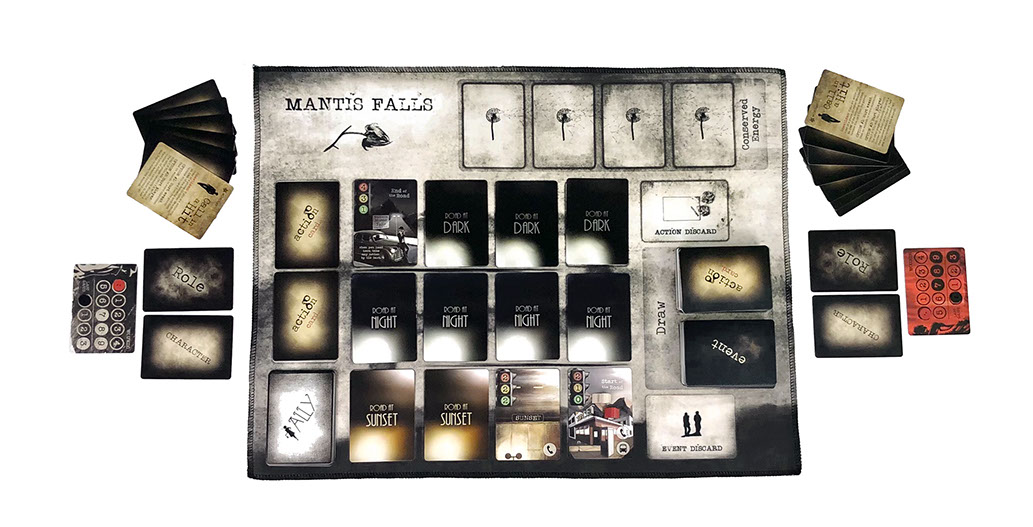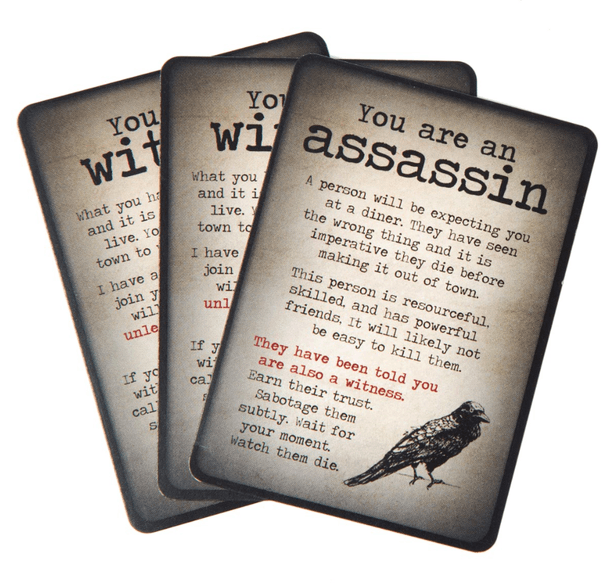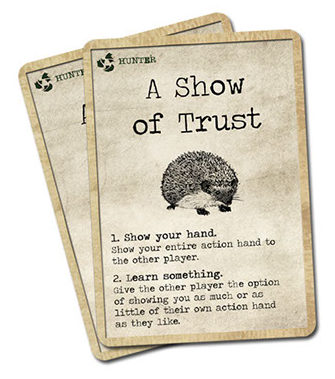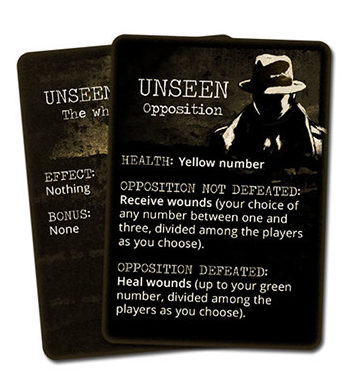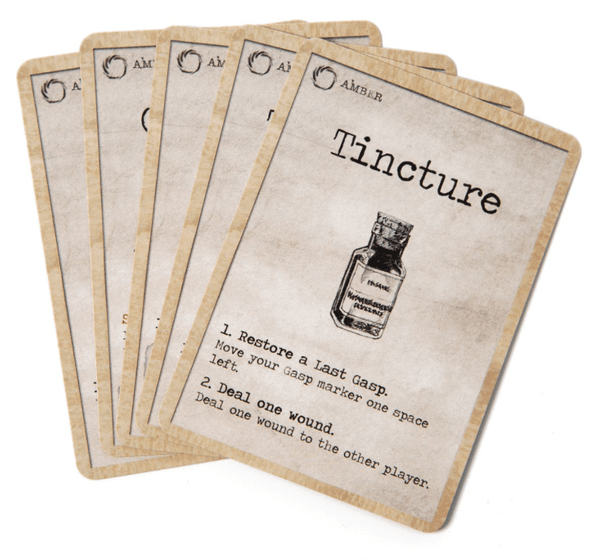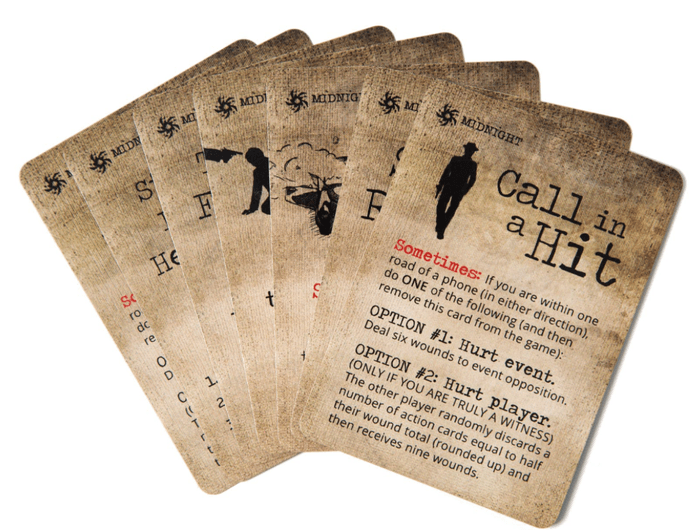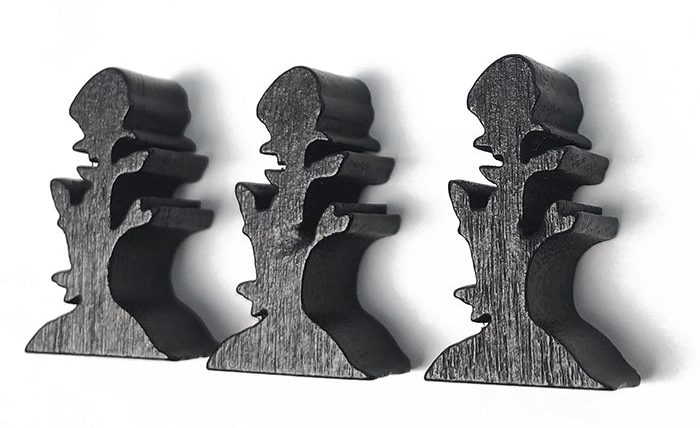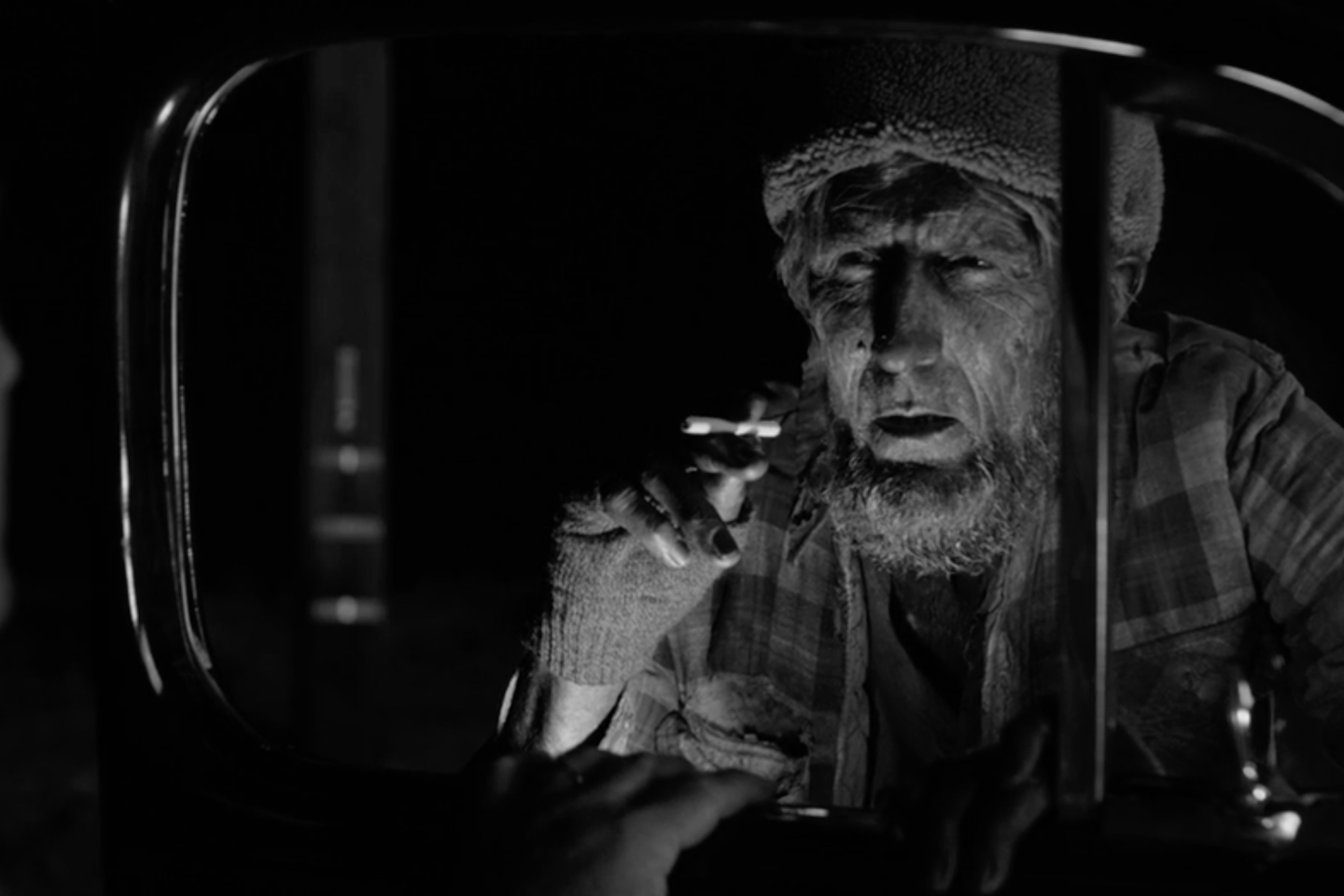As part of our December Spotlight on Mantis Falls, we strive to inform readers of little extra tidbits surrounding the game. Games are made by people, and one of those tidbits we enjoy is learning a little bit more about the people behind them. Some designers shy away from the public stage, while others enjoy being front and center.
The road to the creation of Mantis Falls certainly starts off with a familiar-sounding beat. Designer Adrian Kerrihard, a newcomer to the game creation scene, is more than eager to share his thoughts on his inaugural game with anyone interested to hear about it. His enthusiasm – passion even – for his project is evident from the outset of those first conversations, as those first titles almost always are. The people involved with turning that game from a prototype idea to a fully realized product on the shelf are almost always brimming with an enjoyable blend of enthusiasm seeing their hard work come to life and almost bewildered surprise that audiences have taken notice of it. In all these ways, Adrian’s story, while both uplifting and worth sharing, follows a similar trajectory of many other first-time creators.
Where things take a turn, however, is with just precisely was set out to be done. Leaning into its vaunted noir-style setting, Mantis Falls presents a game about trust, uncertainty, cooperation, and betrayal. In this game, 2-3 players are trying to escape a mob-run town on a dark and fateful night after seeing something they shouldn’t have. The only problem is that you’re not sure whether the other player(s) with you are also mere witnesses trying to survive the night or if one of them is actually an assassin sent to hush you up…permanently.
Yes, what has been accomplished here is a 2-3 player hidden role game, which bucks against the normal ethos of such games needing large groups to function. Here, Adrian and his team managed to accomplish it successfully on a much smaller scale – in a captivating card-driven game of suspense, doubt, and forced cooperation.
The genesis behind this game’s inception proved to be what Adrian felt was a mix of pragmatic necessity, creative inspiration with its setting, and a desire to explore base human responses to doubt, mistrust, fear, and the desire to work together even in the face of unfavorable circumstances. All of which proved enlightening when we finally got a chance to dive in to a conversation about it all. A conversation which was partially delayed due to the holidays. But we’ll let him explain in his own words.
And so, without any further delay, we share part of that conversation with you today.
Enjoy!
Round One Questions
CR: What was your Gateway Game?
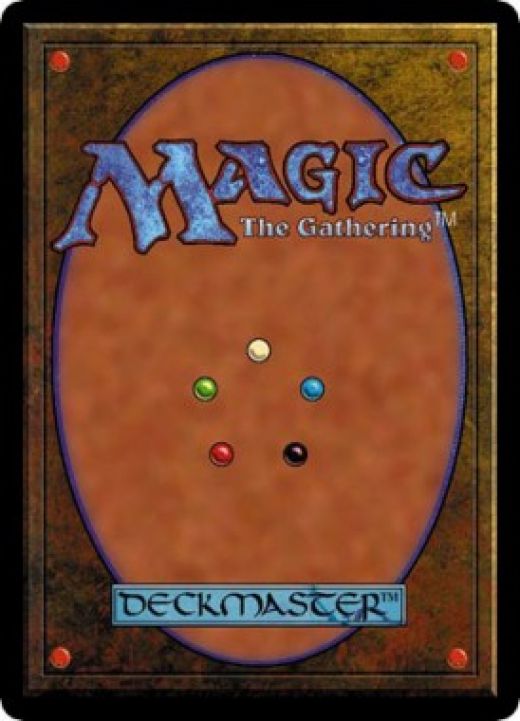
The first tabletop game that I really loved was Magic: The Gathering, which I discovered as a young teenager. I only stayed with it for a few years before the pay-to-keep-up model turned me off, but for that time, it was very enchanting to me. I remember reading my first magazine about it and seeing all the risk-benefit analyses that could be made about the plays and combos and really appreciating the intelligence of it all. I was struck by the way in which analytical thinking and problem-solving helped transform a deck of cards with pictures on them into feeling like a dynamic world. The memories of how exciting that felt has always stuck with me.
CR: What was the last game you really enjoyed playing (besides your own titles)?
Hanabi, The Crew, and Mission to Planet Hexx.
CR: How big is your game collection?
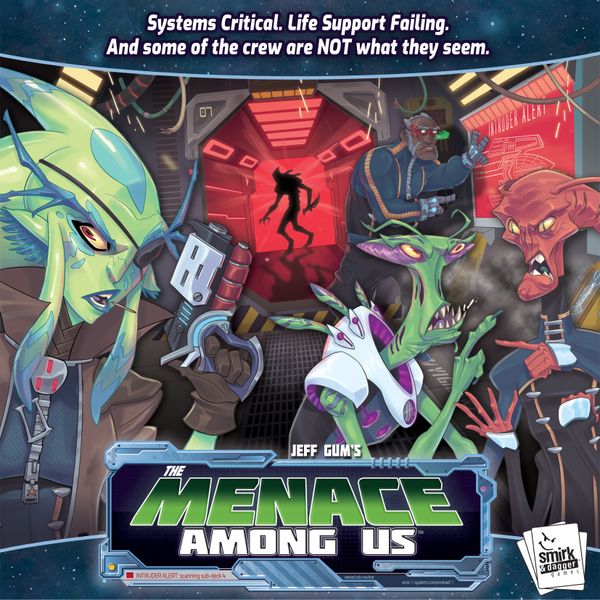 Fairly big, but it’s filled with lots of games for children that we’ll probably be donating soon. My kids were very young when I realized what a great way games were to spend quality time with them, so I made a habit of seeking out good games for every new stage of their lives. We’ve probably had thousands of sessions together at this point. As they’ve grown, my game collecting has shifted gradually more towards titles aimed at adults. And now that we’ve been on the game design and publishing end of things, I’ve gotten more interested in playing and understanding titles by other independent designers.
Fairly big, but it’s filled with lots of games for children that we’ll probably be donating soon. My kids were very young when I realized what a great way games were to spend quality time with them, so I made a habit of seeking out good games for every new stage of their lives. We’ve probably had thousands of sessions together at this point. As they’ve grown, my game collecting has shifted gradually more towards titles aimed at adults. And now that we’ve been on the game design and publishing end of things, I’ve gotten more interested in playing and understanding titles by other independent designers.
CR: What is your favorite type of game to play?
I like games that cause unique interactions between players, and generally ones that have at least some aspect of cooperation or teamwork to them (Hanabi, Deception: Murder in Hong Kong, and The Menace Among Us being a few recent examples). I also like games with many cards with diverse effects.
CR: How do you feel about Monopoly?
As a game, it’s dated now, but it seems like it was way ahead of its time. I think the game’s designer deserves a lot of credit for the imagination that went into that game, and I think it’s still a much more interesting game than what it’s often compared to (Uno, Battleship, etc.). And the story of its creation and eventual misinterpretation is an interesting one.
As a phenomenon (i.e. that Targets are still filled with people putting Minions Monopoly or whatever in their shopping carts rather than getting a different game), I suppose it’s a little disheartening – just in terms of how it seems to reflect a movement counter to creativity or evolution.
More than anything, I suppose I just find it interesting evidence of the extraordinary relative power of ubiquity and precedent versus merit. I think we see that phenomenon in many things, oftentimes to greater consequence than one’s choice of board game. When I see someone looking at another game on the shelf but then throwing Captain America Monopoly into their cart, my first thought is usually to wonder what I’m doing in some aspect of my own life that might look similar to someone else that knows better.
On Mantis Falls
CR: Mantis Falls dives heavily into the classic noir settings. What sort of works did you turn to for inspiration designing the game? Do you have any particular favorite noir stories/movies?
Twin Peaks and Fargo (the TV show) are two particular favorites of mine. Mantis Falls always felt like its own distinct interpretation of noir to us, so we didn’t look to those for ideas in a literal sense, but the feeling of each definitely inspired some of the emotional tone we were going for. And it isn’t a story per se, but the music of Bohren & Der Club Of Gore was a source of great inspiration for much of the game’s development.
CR: The game thrives in part because some playthroughs are fully cooperative and others are competitive – though players never know which version they’re playing. Which side of that was more challenging to craft?
The copout (but honest) answer is that the biggest challenge was making both (cooperative and competitive) possibilities successfully work in the same game. We wanted cooperative victory (achieved by “escape” when all players reach the end of the road alive) to be highly challenging, but we also wanted the survival of witnesses to feel like a looming and dangerous possibility for an assassin to overcome. So there seemed to be an inherent balancing conflict: the more we modified the game to make it difficult to escape (e.g., tougher events, fewer healing cards, etc.), the easier the assassin’s job seemed to become.
A lot of thought and playtesting and refining went into getting that aspect just right, but for a while it was also plagued by some doubt of whether it was even possible. I think it was when I made the card Pied Piper that I realized we could definitely make this work. That card heals a player (which is rare, powerful, and key to survival), but does so by actually making escape tougher (it sticks with you and makes you unable to step on the end of the road until you’ve removed it). It effectively helps a witness against an assassin greatly, but it helps two witnesses working cooperatively against the game to a much lesser degree. Once I hit upon that idea, it allowed us to use card development to fine-tune the balancing of difficulty between competitive and cooperative modes in a way that we hadn’t been able to before. If you look closely, you can see many ways that type of balancing is implemented throughout the cards in the game.
CR: So much hinges on the careful balance between needing to openly discuss tactics and plans with your teammate while remaining guarded enough not to leave yourself too vulnerable to your identity. Similar to the last question, what was the design process like obtaining that balance too? How did you know you finally reached it?
The inspiration for that was always just the question of “what would this experience be like in real life?”. By that I mean, what secrets would you actually consider holding onto? What things could you do to build trust?
Openness and cooperation are inherently useful to people, so I didn’t want to build that into the game too much, per se, so much as just let it occur in a way that felt natural. And then weighing those benefits of openness versus the risks of vulnerability also felt like something that could occur naturally – we face this dilemma in many real settings and it almost never produces easy answers. I wanted to allow the players to find for themselves where that tension point lies when they play, and the way I felt I could do that was by empowering the players with a great diversity of things they can do.
The design process, then, was many hundreds of playtests. Then after each asking myself (and the other players), “what would you have realistically wanted to do if you had been on that road but couldn’t in this game?”. This doesn’t mean fantastical thinking like ‘I wish I could have dealt ten wounds to every event’ or ‘I wish I could have seen your role’, but more realistic things like ‘I wish I could have shown you everything I was carrying to prove you didn’t need to fear me’ or ‘I wish in the moments that I was most afraid of you I could have desperately sprinted ahead in search of a phone to call for help, regardless of what other dangers that may push me into’.
It took a lot of time, but those types of wish lists after playtests got smaller and smaller and smaller until eventually there was nothing left. With the variety of options eventually available to them, the challenge balancing between the benefits of trusting and the dangers of trusting too much was now in the hands of the players, not mine. That’s when the experience felt real to me and the process was complete.
CR: The notion of a 2-player hidden role game is quite novel. What prompted you to tackle the idea?
My partner Juli and I were living in different parts of the country. To stay connected, we played games together on our computers while talking on a speakerphone. In that format, it became really apparent that the games we were playing required no conversation. (While Juli was taking her turn, I would ask her about her day. When I was taking my turn, she would answer, etc.)
I kept thinking that there should be games for even just a couple of people that really required people to experience the game together. We tried some cooperative games, but those quickly produced the problem that it felt like we were essentially playing a single game of solitaire together, which still wasn’t the interactivity I was looking for.
It occurred to me that the ways we interact with people in real life is nuanced and complicated by the constant duality of cooperation and autonomy. Experiencing things with other people always means being an individual among other individuals – all autonomous and with their own motivations and secrets, but still together. And making sense of those social experiences means that every subtle detail – every small hesitation, every conversation, every choice of action – matters.
The fact that so few games for two players tried to capture that feeling began to feel like a gaping hole to me. And then, of course, it was soon after when I realized I wasn’t imagining a game that I hoped to find, but rather one that I wanted to make.
CR: Hidden role and social deduction use player size to obfuscate individual allegiances. That is exponentially harder at the 2-3 player count. What was the greatest design hurdle you faced when adapting it to a smaller group size?
The big twist on this compared to most hidden traitor games is that it’s also sometimes cooperative – which is a necessity for it to work at two players (a game that always has a hidden traitor would, obviously, not work at two players). This was always core to how the game would work.
The other more subtle twist is that it’s less a game of plausible deniability (e.g., the ‘I didn’t play the sabotage card – someone else did!’ defense common to other hidden role games) and more a game of plausible justification (e.g. ‘yes, I sabotaged you but I did it because I was fearful that you were an assassin that would use your strength against me’). This was done partly because it fits smaller player counts well, but also because it just felt like a more dynamic and realistic experience to me.
Once those ideas were in place, making it work for small player counts actually felt quite natural.
CR: By contrast, which element (if any) did you expect to be a design challenge but wasn’t?
Making an assassin feel the need to pretend to be a witness was hugely important to the game working, but that was essentially figured out within about ten minutes of me realizing I wanted to make this game. I had the idea that witnesses could call in hits on those they suspected, but only if they were near phones – and those phones would get fewer as the game progressed. That idea not only helped crystallize the film noir setting for me, but it stayed almost perfectly intact from that first moment on. There were actually a fair number of cards like that – ones that seemed core to what I was trying to create within the first day of me imagining this and that then survived all the way to the game’s final iteration.
CR: Mantis Falls did phenomenal on Kickstarter, with more than 6,600 backers. Were you prepared for that kind of reception? What do you feel was the reason it resonated it so many people?
We were prepared for it in the sense that we felt we could manage it, but we weren’t prepared in the sense that it was something we were expecting. Our dream was just to make the game real, which would have required about 300 backers. Beyond that, some people with experience with this sort of thing looked at the Kickstarter page we were drafting and said “you might get as much as $50k”, to which our response was that we didn’t want to get our hopes up.
Why it ended up being bigger than that is not actually something we have the answer to. In fact, we’re still not even sure where many of these backers came from. Did they just find us on Kickstarter organically? And if so, did we get bigger numbers than we expected because a lot of people came to our site or was it because a high proportion of them backed? We don’t know the answers to even simple questions like that – and much less why they backed it.
Juli did a lot of good work spreading the word and getting review copies out beforehand, and that probably helped a lot. We were also selected for the PAX South Indie Showcase a few months before our Kickstarter launch, and that exposure probably helped a great deal as well.
In terms of the game or our Kickstarter page itself resonating with people: we’d like to think we created something fairly unique, put in the hard work of making it exactly what we envisioned, and then presented it honestly as a product of real inspiration. But I think we’re also very reluctant to pat ourselves on the back for that too much. We’ve seen many beautiful and inspired games appear on Kickstarter and some of them do well but a lot of them don’t. I’m not able to say confidently what separates one level of success from another, other than that I’d guess there’s at least a fair amount of chance involved.
CR: One of the more intrepid mechanical aspects found in Mantis Falls is that it could lend itself to other scenarios. Have you ever considered exploring other stories in the same noir world or entirely new stories using the same system?
Yes, we’ve explored this idea a lot recently in all sorts of avenues (prequels, sequels, graphic novels, expansions, etc.). But we’re also motivated to create entirely new worlds as well. Which of those we’ll aim to fully realize next is still TBD at the moment…
CR: Finally, let’s say you found yourself in the situation within the game. How do you think you’d fare?
Players usually die the first time they play Mantis Falls. If it were real life, I’d only get one chance to get it right so I think I’d be in pretty big trouble.
Photo Credits: Mantis Falls cover and photos by Distant Rabbit Games; Twin Peaks by Showtime.

